
Configuration and Options
PMDG aircraft, such as the 777-300ER for Microsoft Flight Simulator, stand out due to their extensive configuration options, mirroring the customization available when ordering a real Boeing aircraft. These configurations include both standard Boeing options and airline-specific tweaks, allowing users to set up their aircraft to match the exact specifications of different airlines. For instance, you can configure a Cathay Pacific B-KQU with specific settings distinct from those on a KLM PH-BVF. Each configuration is saved individually, ensuring that changes made to one aircraft do not affect others in your fleet.
The showcased options encompass a variety of settings, excluding 18 pages of color customization. Key categories include Aircraft Equipment, where users can modify hardware and systems; Aircraft Displays, which allows adjustments to screen layouts and information displays; and Performance Options, focusing on optimizing the aircraft’s performance characteristics. These detailed settings ensure that virtual pilots can achieve a high degree of realism and accuracy in replicating specific airline operations and preferences.







Flight Controls and Flight Surfaces
PMDG’s flight control systems for their 777-300ER are designed with meticulous attention to realism, incorporating extensive feedback from active pilots. This results in highly accurate simulations of control surfaces and their interactions, including precise modeling of electric trim speeds and the varying trim rate based on flight phase and configuration. The simulation also accounts for the slower flap deployment speeds when using alternate or secondary systems, and realistic aerodynamic limitations on rudder inputs at different speeds, ensuring that full rudder deflection is not possible at moderate IAS. Additionally, the trim actively adjusts the elevator neutral point as the aircraft surpasses Mach 0.615, enhancing the realism of manual flight stability.
The simulation covers a wide range of detailed flight control behaviors, such as the inboard flaperons’ depressurization during takeoff to reduce actuator stress, and the floating ailerons that adjust based on flight phase and wing flap configuration to improve effectiveness and reduce wing flex. The PMDG 777 also includes accurate overspeed protection logic for wing flaps and models the primary, secondary, and reversionary control characteristics, capturing the different feel of controls as they degrade. The AFDS system, including the C*U logic, ensures that the fly-by-wire system mimics the stability and response of conventional aircraft, enhancing both speed and pitch stability. Additional details, such as partial deployment of ground spoilers and horizontal stabilizer flex due to air disturbance, add to the depth of the simulation.
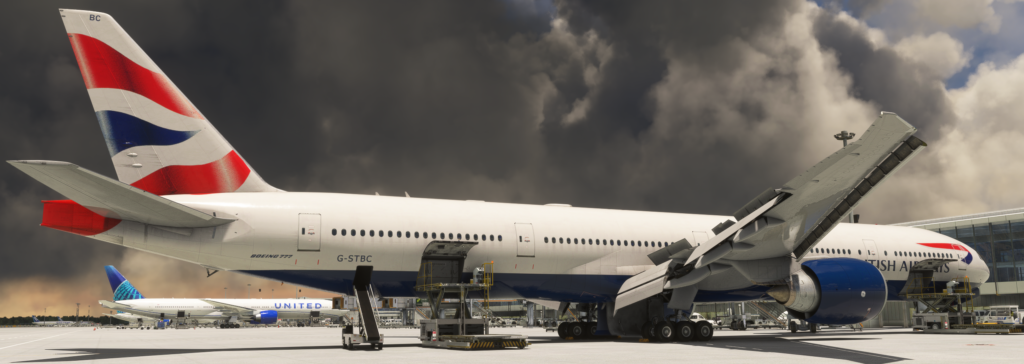

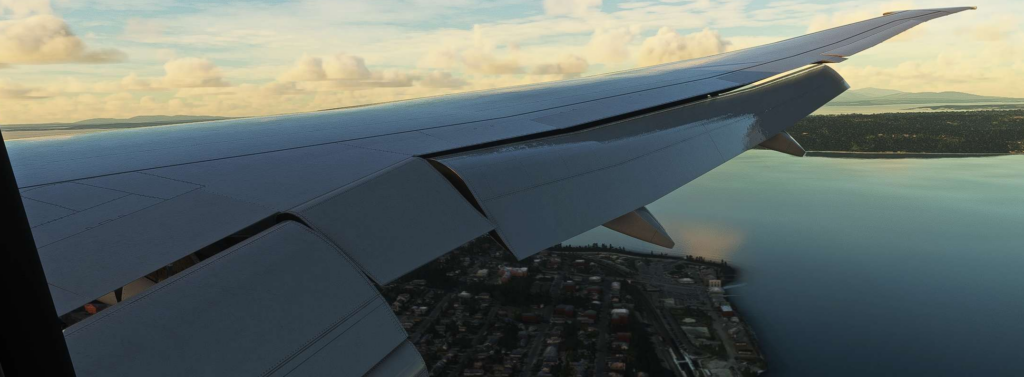

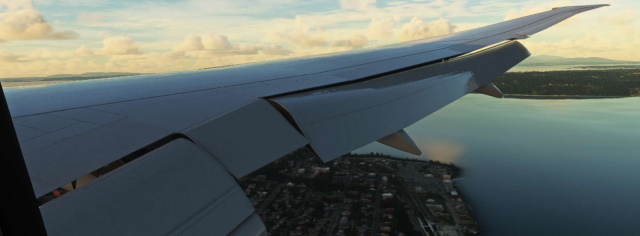
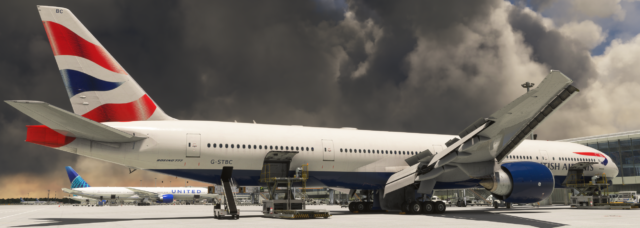
Avionics & Flight Deck
PMDG’s 777-300ER simulation for MSFS emphasizes a high level of realism in avionics and flight deck operations, accurately replicating the delay in system responses to crew inputs. When switches or knobs are adjusted, there is a realistic delay before the aircraft systems and indicators reflect these changes, mirroring the behavior of actual aircraft. This depth of simulation is evident in the handling of sensors and EICAS (Engine Indicating and Crew Alerting System) messages, where Boeing’s logic to suppress transient alerts is faithfully modeled. Alerts on the EICAS system appear only after the system states stabilize, incorporating delays ranging from a few seconds to a minute, enhancing the realism.
The PMDG 777 also includes an optional crew alertness monitoring system, which mimics real-world functionality by monitoring crew inputs to the flight controls or autoflight system. If no changes are detected for a specified period, the system generates alerts requiring a response, simulating the need for constant crew engagement. This feature can be toggled on or off in the options menu, reflecting the real-world sentiment where many flight crews find this system bothersome. Additionally, the virtual cockpit allows for customization of tablet positions, enabling users to place the tablet near the FMS for convenient comparison of flight plans, fuel loads, fix names, ETAs, and other critical information displayed on the NAV display, just like in real-life operations.
Furthermore, the 777 simulation includes a master dim knob for cockpit lighting, allowing pilots to adjust the brightness of all cockpit lights with a single control. For those who prefer manual control, the central button on the knob can be pressed to disable this feature, providing full manual control over lighting levels. This combination of detailed avionics, realistic system responses, customizable crew alertness monitoring, and adaptable cockpit lighting ensures that the PMDG 777-300ER offers a highly immersive and authentic flight simulation experience.
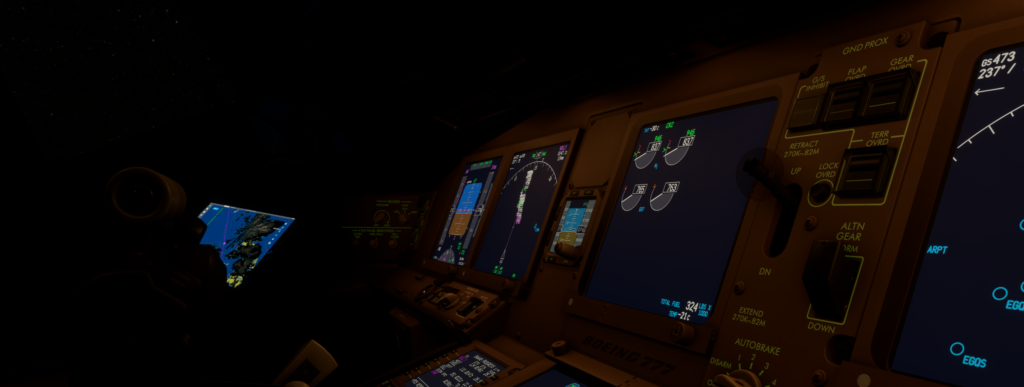
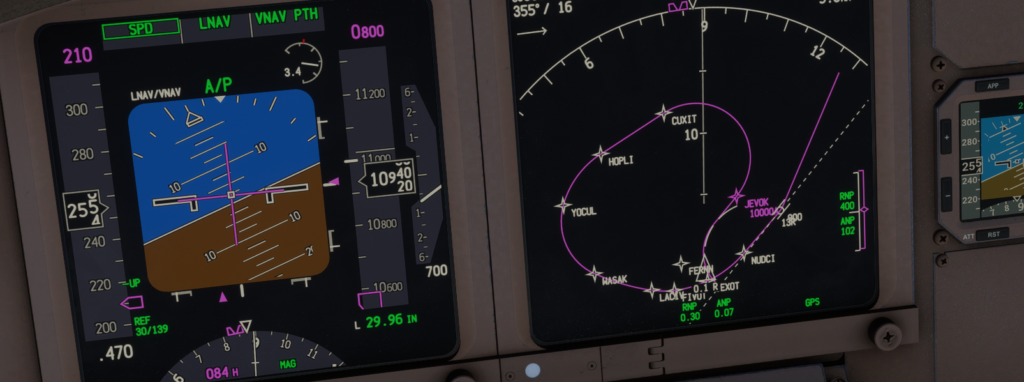
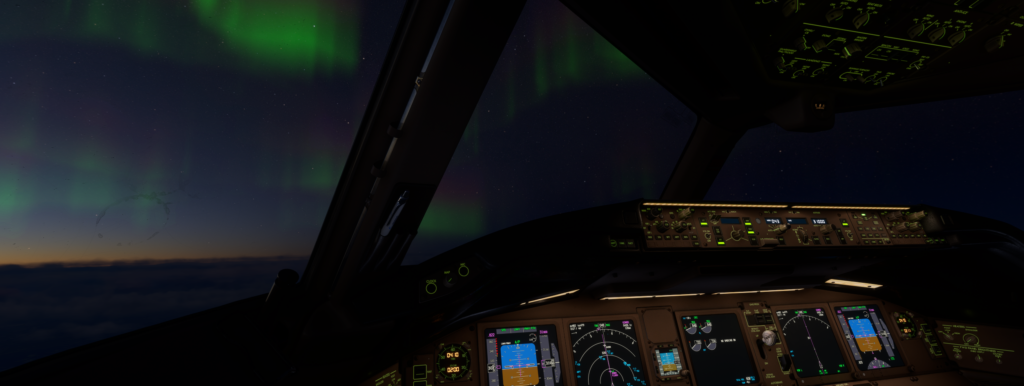
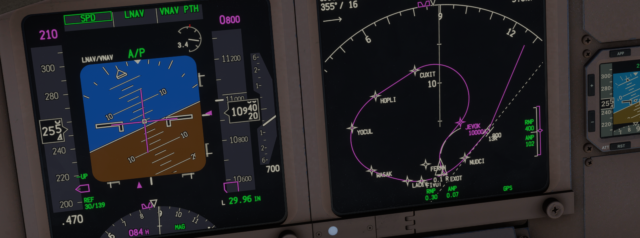
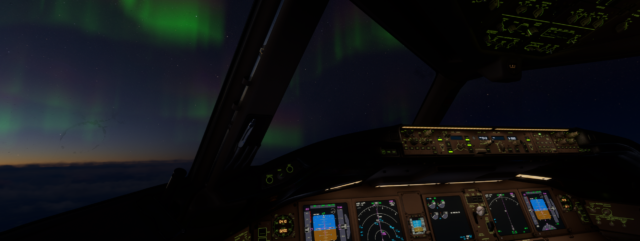
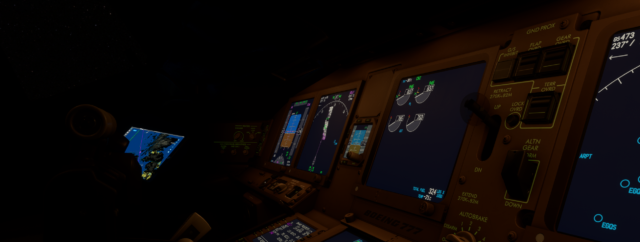
Learn more about the upcoming PMDG 777-300ER for MSFS with our series :
PMDG – 777-300ER MSFS – Showcase 2 The Universal Tablet MSFS
PMDG – 777-300ER Hydraulics and Gear System Showcase in MSFS
PMDG – 777-300ER MSFS Official Trailer